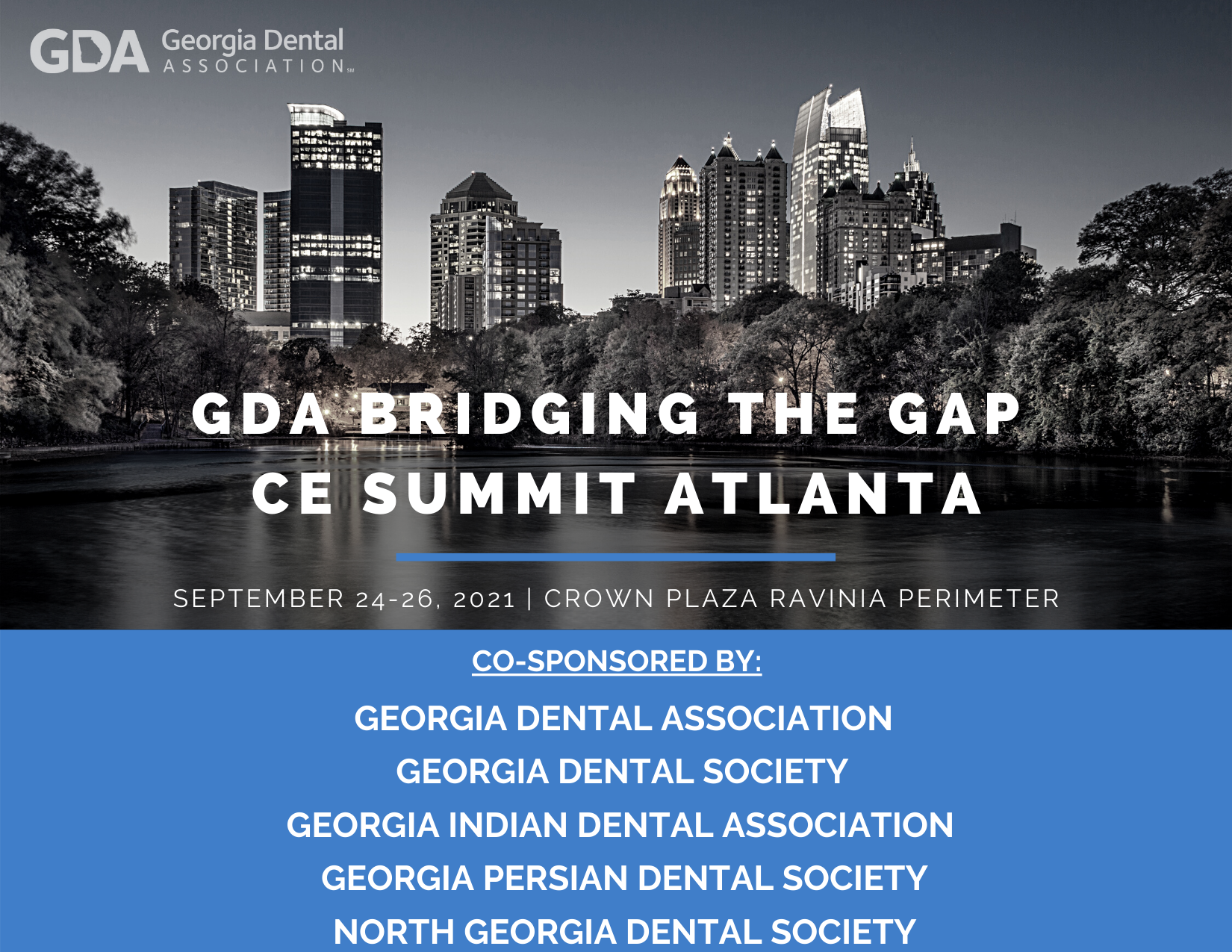
2021 COURSE LISTING
FRIDAY, SEPTEMBER 24
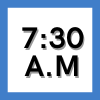
2-DAY SLEEP MEDICINE TRACK - SESSION 1 - AN OVERVIEW ON SLEEP
Speaker: Dr. Terry Bennett
Room: Ravinia ABC
COURSE HANDOUTS
This 2-day education program will cover dental sleep medicine and orofacial pain discussing TMJ disorders and briefly touch on other orofacial pain seen in a general dental practice.
It is estimated that more than 18 million Americans suffer from sleep apnea—when a person’s airway gets blocked while they are sleeping. This will often happen because a person is overweight and additional tissue thickens the wall of the windpipe, making it more difficult to keep open. And, sometimes it is because the throat muscles relax more than normal. A long, bony neck can also make for a narrower airway, which leads to sleep apnea as well.
The most common treatment option is the use of a CPAP machine. However, many patients are non-compliant to this form of treatment and do not want to undergo surgery. When this occurs, their best option may be oral appliance therapy, which is provided by a dentist. By wearing an oral appliance, it opens the airway by pushing the lower jaw forward and is more comfortable than a CPAP machine. The one-day program will give you an overview convening the following;
- Basics of Sleep, Sleep Medicine and Sleep Disorders
- The Role of the Dentist in Sleep Medicine
- Screening for Sleep Disorders
- Oral Appliances for Airway and Breathing Disorders (SRBD)
- The Jaw/Bite Registration for Construction of an Oral Appliance (Demonstration and Hands-On Exercise)
Orofacial pain covers a wide spectrum of symptoms and can be exhibited in many areas of the head and neck with the majority of complications associated with the temporomandibular joint disorder (TMD). An essential part of routine dental examinations for all patients and the gold standard for the diagnosis of TMD is based on the patient’s history, clinical examination, and imaging when necessary.
The connection between airway issues, bruxism, and TMD (orofacial pain) is no longer a question of ‘if’. Instead, it is a question of proper evaluation and diagnosis by the dental and medical teams. As a dentist, you will often evaluate, refer, and possibly manage these issues impacting such a large percentage of the population. And, with a clear relationship, we look to understand that clenching or grinding of one’s teeth is a way for the brain to protect itself from suffocation during sleep.
- Performing a comprehensive examination
- Taking a Pain history - what it all means
- Splint therapy for TMJ disorders
- Orofacial pain - what you should be aware of.
600726b7-f8e8-4602-a9b2-2c3b4edff821.png?sfvrsn=bdaaa90d_1)
BIOLOGICALLY ACTIVE MATERIALS FOR GUIDED BONE REGENERATION
8 a.m. – 10 a.m.
Speaker: Dr. Peter Shatz
Room: Ravinia EFG
This course provides an overview of guided bone regeneration, platelet rich plasma and available materials for dentoalveolar grafting. These will be taught with clinically proven techniques.
Topics Covered
- Indications and applications for different grafting materials and their techniques
- Surgical principles for successful socket grafting.
- Grafting products currently available on the market – human, animal, synthetics, autogenous.
- Selection process for graft materials based on sound evidence and scientific physiologic fundamentals – for socket grafts and ridge augmentation.
Upon completion of this course participants should be able to:
- Understand the accepted physiology of healing following an extraction.
- Understand the function of blood supply and capillary formation, source of calcium in bone deposited at the site vs. calcium present in the graft material, the purpose of a scaffold for capillary infiltration, and the importance of platelet-rich fibrin and growth factors in the success of a socket graft.
- Describe the procurement and processing of allogenic tissue for dentoalveolar surgery.
- Learn the rationale and use of Platelet Rich Plasma (PRP) as an adjunct to socket grafting.
- Identify successful socket replacement graft based on established evidence and fundamental science.
2f46ad32-0f26-4650-b4e5-685ebac2ac78.png?sfvrsn=f38686c3_1)
CPR - AM
Room: Azalea
AMERICAN HEART ASSOCIATION
BLS course teaches Basic Life Saving Skills including adult, child and infant AED Training, CPR, signs of choking, how to help a choking victim, how to activate and phone your (EMS) Emergency Response Number (911).
The American Heart Association BLS Course teaches rescuers to effectively recognize and treat adult emergencies in the critical first minutes, until emergency medical services personnel arrive.
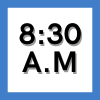
TOP 3 DENTAL INSURANCE TRENDS IMPACTING YOUR INCOME IN 2021
Speaker: Patrick O'Rourke
Room: Dunwoody Suite
The private insurance industry and the Federal/State governing bodies are responsible for financing most of the healthcare treatment in the Unites States. These entities are constantly evolving with regards to budgets, perceived treatment necessity, legislative initiatives, and market share.
A summary of material industry changes that have happened in the past twelve to eighteen months and/or are pending will be included with a breakdown of resulting effects for dental community.
This course will focus primarily on private insurance industry efforts to reduce their cost of care, attempts to add/remove procedures, and alter overall methodology to compensate dentists for treatment. It will cover new companies and products that have potential to disrupt traditional markets. There will be an overview of recent network participating contract language and what steps can be taken to remedy (if applicable). There will be a question and answer period at the end to facilitate discussion amongst the session participants.
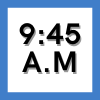
2-DAY SLEEP MEDICINE TRACK - SESSION 2 - IDENTIFYING SDB PATIENTS IN YOUR PRACTICE
9:45 a.m. – 11:45 a.m.
Speaker: Dr. Mayoor Patel
Room: Ravinia ABC
COURSE HANDOUTS
This 2-day education program will cover dental sleep medicine and orofacial pain discussing TMJ disorders and briefly touch on other orofacial pain seen in a general dental practice.
It is estimated that more than 18 million Americans suffer from sleep apnea—when a person’s airway gets blocked while they are sleeping. This will often happen because a person is overweight and additional tissue thickens the wall of the windpipe, making it more difficult to keep open. And, sometimes it is because the throat muscles relax more than normal. A long, bony neck can also make for a narrower airway, which leads to sleep apnea as well.
The most common treatment option is the use of a CPAP machine. However, many patients are non-compliant to this form of treatment and do not want to undergo surgery. When this occurs, their best option may be oral appliance therapy, which is provided by a dentist. By wearing an oral appliance, it opens the airway by pushing the lower jaw forward and is more comfortable than a CPAP machine. The one-day program will give you an overview convening the following;
- Basics of Sleep, Sleep Medicine and Sleep Disorders
- The Role of the Dentist in Sleep Medicine
- Screening for Sleep Disorders
- Oral Appliances for Airway and Breathing Disorders (SRBD)
- The Jaw/Bite Registration for Construction of an Oral Appliance (Demonstration and Hands-On Exercise)
Orofacial pain covers a wide spectrum of symptoms and can be exhibited in many areas of the head and neck with the majority of complications associated with the temporomandibular joint disorder (TMD). An essential part of routine dental examinations for all patients and the gold standard for the diagnosis of TMD is based on the patient’s history, clinical examination, and imaging when necessary.
The connection between airway issues, bruxism, and TMD (orofacial pain) is no longer a question of ‘if’. Instead, it is a question of proper evaluation and diagnosis by the dental and medical teams. As a dentist, you will often evaluate, refer, and possibly manage these issues impacting such a large percentage of the population. And, with a clear relationship, we look to understand that clenching or grinding of one’s teeth is a way for the brain to protect itself from suffocation during sleep.
- Performing a comprehensive examination
- Taking a Pain history - what it all means
- Splint therapy for TMJ disorders
- Orofacial pain - what you should be aware of.
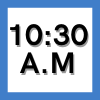
IS THERE ROOM IN CONTEMPORARY ORTHODONTICS FOR EXTRACTIONS?
Speaker: Dr. Ricky Harrell
Room: Maplewood
COURSE HANDOUTS
Extractions - Dr. Harrel - 1 of 4
Extractions - Dr. Harrel - 2 of 4
Extractions - Dr. Harrel - 3 of 4
Extractions - Dr. Harrel - 4 of 4
The presentation will present a look at the current controversies surrounding extractions as a part of comprehensive orthodontic therapy. The evidence regarding the relationships of topics such as airway impact, profile impact, effects on buccal corridors and the incidence of TMJ dysfunction as they relate to extractions in orthodontic therapy will be examined. Certain sections of the course will have audience participation as we move through the various aspects of this topic.
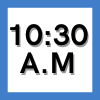
EVIDENCE-BASED APPROACH TO RECONSTRUCTION
10:30 a.m. – 12:00 p.m.
Speaker: Dr. Kumar Patel
Room: Ravinia ABC
This presentation discusses evidence supporting different restoration choices and it’s significance. Indication for different treatment modality and factors contributing to success and failure in comprehensive treatment.
THE DENTIST'S ROLE IN CHILD ABUSE
12:45 – 2:45 p.m.
Speaker: Dr. Tom David
Room: Dunwoody Suite
This presentation will focus on the role of the dentist in recognition of suspected child abuse. It will also discuss the legal obligations that dentists and other health care professionals have in reporting suspected child abuse. Dentists play a pivotal role in recognition of suspected child abuse because most physical signs of child abuse are located in the head and neck area. Additionally, most children see a dentist more often than their physician (pediatrician).

CPR - PM
Room: Azalea
AMERICAN HEART ASSOCIATION
BLS course teaches Basic Life Saving Skills including adult, child and infant AED Training, CPR, signs of choking, how to help a choking victim, how to activate and phone your (EMS) Emergency Response Number (911).
The American Heart Association BLS Course teaches rescuers to effectively recognize and treat adult emergencies in the critical first minutes, until emergency medical services personnel arrive.

TRENDS IN THE BUSINESS OF DENTISTRY
1:00 p.m. – 2:30 p.m.
Speaker: Harris Gignilliat / Panel Discussion
Room: Dunwoody Suite
Get access to collective expertise from across the spectrum of professional services for dentists. In this session, panelists will discuss relevant topics and solutions specific to the dental industry. The Q&A format allows attendees the opportunity to gain access to advice from top regional experts.
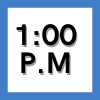
2-DAY SLEEP MEDICINE TRACK - SESSION 3 – OVERVIEW OF THE DENTIST’S ROLE IN DSM PART 1
Speaker: Dr. Terry Bennett
Room: Ravinia ABC
This 2-day education program will cover dental sleep medicine and orofacial pain discussing TMJ disorders and briefly touch on other orofacial pain seen in a general dental practice.
It is estimated that more than 18 million Americans suffer from sleep apnea—when a person’s airway gets blocked while they are sleeping. This will often happen because a person is overweight and additional tissue thickens the wall of the windpipe, making it more difficult to keep open. And, sometimes it is because the throat muscles relax more than normal. A long, bony neck can also make for a narrower airway, which leads to sleep apnea as well.
The most common treatment option is the use of a CPAP machine. However, many patients are non-compliant to this form of treatment and do not want to undergo surgery. When this occurs, their best option may be oral appliance therapy, which is provided by a dentist. By wearing an oral appliance, it opens the airway by pushing the lower jaw forward and is more comfortable than a CPAP machine. The one-day program will give you an overview convening the following;
- Basics of Sleep, Sleep Medicine and Sleep Disorders
- The Role of the Dentist in Sleep Medicine
- Screening for Sleep Disorders
- Oral Appliances for Airway and Breathing Disorders (SRBD)
- The Jaw/Bite Registration for Construction of an Oral Appliance (Demonstration and Hands-On Exercise)
Orofacial pain covers a wide spectrum of symptoms and can be exhibited in many areas of the head and neck with the majority of complications associated with the temporomandibular joint disorder (TMD). An essential part of routine dental examinations for all patients and the gold standard for the diagnosis of TMD is based on the patient’s history, clinical examination, and imaging when necessary.
The connection between airway issues, bruxism, and TMD (orofacial pain) is no longer a question of ‘if’. Instead, it is a question of proper evaluation and diagnosis by the dental and medical teams. As a dentist, you will often evaluate, refer, and possibly manage these issues impacting such a large percentage of the population. And, with a clear relationship, we look to understand that clenching or grinding of one’s teeth is a way for the brain to protect itself from suffocation during sleep.
- Performing a comprehensive examination
- Taking a Pain history - what it all means
- Splint therapy for TMJ disorders
- Orofacial pain - what you should be aware of.
DENTAL CODING: WHAT’S NEW? WHAT’S WRONG? WHAT CAN IT DO FOR ME?
3:00 – 5:00 p.m.
Speaker: Dr. Marie Schweinebraten
Room: Dunwoody
COURSE HANDOUTS
Coding - Dr. Schweinebraten
Dental procedure codes are an integral part of a dental practice. Without them, offices would not get paid! An update on the new codes and changes for 2022 will be reviewed. Common mistakes when submitting codes to third party payers will be addressed. Ways to avoid delayed payments will be discussed. And the new ADA Registry will be introduced and how it can help your practice.

2-DAY SLEEP MEDICINE TRACK - SESSION 4 – OVERVIEW OF THE DENTIST’S ROLE IN DSM PART 2
3:15 p.m. – 5:15 p.m.
Speaker: Dr. Mayoor Patel
Room: Ravinia ABC
COURSE HANDOUTS
This 2-day education program will cover dental sleep medicine and orofacial pain discussing TMJ disorders and briefly touch on other orofacial pain seen in a general dental practice.
It is estimated that more than 18 million Americans suffer from sleep apnea—when a person’s airway gets blocked while they are sleeping. This will often happen because a person is overweight and additional tissue thickens the wall of the windpipe, making it more difficult to keep open. And, sometimes it is because the throat muscles relax more than normal. A long, bony neck can also make for a narrower airway, which leads to sleep apnea as well.
The most common treatment option is the use of a CPAP machine. However, many patients are non-compliant to this form of treatment and do not want to undergo surgery. When this occurs, their best option may be oral appliance therapy, which is provided by a dentist. By wearing an oral appliance, it opens the airway by pushing the lower jaw forward and is more comfortable than a CPAP machine. The one-day program will give you an overview convening the following;
- Basics of Sleep, Sleep Medicine and Sleep Disorders
- The Role of the Dentist in Sleep Medicine
- Screening for Sleep Disorders
- Oral Appliances for Airway and Breathing Disorders (SRBD)
- The Jaw/Bite Registration for Construction of an Oral Appliance (Demonstration and Hands-On Exercise)
Orofacial pain covers a wide spectrum of symptoms and can be exhibited in many areas of the head and neck with the majority of complications associated with the temporomandibular joint disorder (TMD). An essential part of routine dental examinations for all patients and the gold standard for the diagnosis of TMD is based on the patient’s history, clinical examination, and imaging when necessary.
The connection between airway issues, bruxism, and TMD (orofacial pain) is no longer a question of ‘if’. Instead, it is a question of proper evaluation and diagnosis by the dental and medical teams. As a dentist, you will often evaluate, refer, and possibly manage these issues impacting such a large percentage of the population. And, with a clear relationship, we look to understand that clenching or grinding of one’s teeth is a way for the brain to protect itself from suffocation during sleep.
- Performing a comprehensive examination
- Taking a Pain history - what it all means
- Splint therapy for TMJ disorders
- Orofacial pain - what you should be aware of.
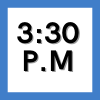
RANSOMWARE ATTACKS - WILL YOU BE THE NEXT UNSUSPECTING VICTIM?
3:30 - 5:30 pm
Speaker: Paul Murphy
Room: Ravinia EFG
COURSE HANDOUTS
Ransomware PP 2021 - Paul Murphy
We will provide you with comprehensive information on how ransomware is impacting practices across the U.S.
Practices often have a false sense of security that their IT vendor is providing adequate security to mitigate the risks of a data breach. We will discuss the differences between IT vendors and cybersecurity companies and why practices should engage with a cybersecurity company to provide the additional protection from the advanced threats that are affecting practices.
- Are you mentally and financially prepared to be shut down for 2-4 weeks after you recover your data?
- How will you schedule patients?
- How will you collect A/R?
- How will you file claims?
- And, how will you handle the negative PR – including your reputation and lost patient loyalty and trust?
At the end of this presentation, you will have a thorough understanding of the following:
1. How to protect your practice from ransomware attacks and identity theft
2. Technologies and solutions that can help minimize the chances of a cyberattack
3. The differences between IT companies and cybersecurity companies
4. The steps you need to take NOW!
SATURDAY, SEPTEMBER 25

2-DAY SLEEP MEDICINE TRACK - SESSION 5 – ANATOMY AND FUNCTION OF TMJ AND ASSOCIATED STRUCTURES
Speaker: Dr. Terry Bennett
Room: Ravinia ABC
COURSE HANDOUTS
This 2-day education program will cover dental sleep medicine and orofacial pain discussing TMJ disorders and briefly touch on other orofacial pain seen in a general dental practice.
It is estimated that more than 18 million Americans suffer from sleep apnea—when a person’s airway gets blocked while they are sleeping. This will often happen because a person is overweight and additional tissue thickens the wall of the windpipe, making it more difficult to keep open. And, sometimes it is because the throat muscles relax more than normal. A long, bony neck can also make for a narrower airway, which leads to sleep apnea as well.
The most common treatment option is the use of a CPAP machine. However, many patients are non-compliant to this form of treatment and do not want to undergo surgery. When this occurs, their best option may be oral appliance therapy, which is provided by a dentist. By wearing an oral appliance, it opens the airway by pushing the lower jaw forward and is more comfortable than a CPAP machine. The one-day program will give you an overview convening the following;
- Basics of Sleep, Sleep Medicine and Sleep Disorders
- The Role of the Dentist in Sleep Medicine
- Screening for Sleep Disorders
- Oral Appliances for Airway and Breathing Disorders (SRBD)
- The Jaw/Bite Registration for Construction of an Oral Appliance (Demonstration and Hands-On Exercise)
Orofacial pain covers a wide spectrum of symptoms and can be exhibited in many areas of the head and neck with the majority of complications associated with the temporomandibular joint disorder (TMD). An essential part of routine dental examinations for all patients and the gold standard for the diagnosis of TMD is based on the patient’s history, clinical examination, and imaging when necessary.
The connection between airway issues, bruxism, and TMD (orofacial pain) is no longer a question of ‘if’. Instead, it is a question of proper evaluation and diagnosis by the dental and medical teams. As a dentist, you will often evaluate, refer, and possibly manage these issues impacting such a large percentage of the population. And, with a clear relationship, we look to understand that clenching or grinding of one’s teeth is a way for the brain to protect itself from suffocation during sleep.
- Performing a comprehensive examination
- Taking a Pain history - what it all means
- Splint therapy for TMJ disorders
- Orofacial pain - what you should be aware of.
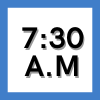
PHARMACOLOGY UPDATE FOR TODAY'S DENTAL PRACTICE
7:30 a.m. – 9:30 a.m.
Speaker: Dr. Michael Pruett
Room: Dunwoody
A review of new and commonly used drugs in dental practice will be presented with an emphasis on therapeutic categories, dosages, and patient-specific instructions. The presentation will emphasize recognition of new drugs, strategies for patient management related to their drug therapy, and essential analgesics and antibiotics for practice

REHABILITATION OF DAMAGED ANTERIOR MAXILLA
8:30 a.m. – 12:00 p.m. (3 CE Hours)
Speaker: Dr. Gordon Brady and Dr. Larry Sims
Room: Oakwood
COURSE HANDOUTS
Rehab of Damaged Ant Max Drs Brady and Sims draft 2021
Whether restoring natural dentition or dental implants the anterior maxilla remains our biggest challenge. When treatments fail, subsequent attempts at reconstruction are even more challenging. Recognizing factors that lead to failures and then utilizing new surgical and prosthetic technologies will offer hope for improved prognoses. This course will review several extreme clinical circumstances and the techniques and technologies used to achieve resolution.
Learning Objectives
After participating in this session, attendees should:
- Understand several reasons for failure of implant restorations in the anterior maxilla.
- Understand the specific considerations which must be addressed in reconstruction of the anterior maxilla with implants including methods to enhance the width of the ridge.
- Understand approaches for implant reconstruction in patients demonstrating severe atrophy.
2f46ad32-0f26-4650-b4e5-685ebac2ac78.png?sfvrsn=f38686c3_1)
CBCT: A GUIDE FOR THE GENERAL DENTIST PERFORMING ORTHODONTIC TREATMENTS
8:00 a.m. – 10:00 a.m.
Speaker: Dr. Gabriella Herrera
Room: Ravinia EFG
In the present day, General Practitioners perform orthodontic treatment with Clear Aligners as well as other devices. 3D imaging is available in GP practices giving the possibility to diagnose and treatment plan beyond the limitations of 2D images. Reviewing anatomical landmarks, evaluating the airway and assessing the boundaries of the alveolar bone are crucial for proper diagnosis, treatment and stability of all orthodontic tooth movements. Clinical cases will be centered on evaluating the airway and the importance of patient communication. We will also review orthodontic cases that go beyond the biological limit of the alveolar housing and why it should be avoided.
04ce452a-a5a2-4ed4-b393-5fe8a7ccf37b.png?sfvrsn=93ca2dfc_1)
CPR - AM
AMERICAN HEART ASSOCIATION
BLS course teaches Basic Life Saving Skills including adult, child and infant AED Training, CPR, signs of choking, how to help a choking victim, how to activate and phone your (EMS) Emergency Response Number (911).
The American Heart Association BLS Course teaches rescuers to eff ectively recongnize and treat adult emergencies in the critical fi rst minutes, until emergency medical services personel arrive.

ORAL PATHOLOGY
8:30 a.m. – 12:00 p.m.
Speaker: Olga Ibsen
Room: Maplewood
COURSE HANDOUTS
Oral Pathology - O. Ibsen
The course will cover the seven diagnostic methods that contribute to a final diagnosis. They include the following features : clinical, radiographic, historical, laboratory, surgical, therapeutic, and differential. Several lesions and conditions in each category will be discussed from etiology to prognosis.. The strength of the diagnosis for each lesion will come from one, two or more diagnostic methods. This methodical approach has been found to be very helpful in the diagnostic process. Lesions will include those associated with the inflammatory process, immunity, infectious disease, developmental disorders, genetics, neoplasia, and oral manifestations of systemic disease. Documentation procedures, biopsy techniques and referral options will also be covered. The role of each member of the dental team will be addressed. One patient dies every hour of every day from oral cancer. Hopefully, this course will help you change this statistic. You will return to clinical practice with an enlightened approach to managing oral lesions and conditions.

2-DAY SLEEP MEDICINE TRACK - SESSION 6 – TAKING A PAIN HISTORY
9:45 a.m.– 11:45 a.m.
Speaker: Dr. Mayoor Patel
Room: Ravinia ABC
COURSE HANDOUTS
This 2-day education program will cover dental sleep medicine and orofacial pain discussing TMJ disorders and briefly touch on other orofacial pain seen in a general dental practice.
It is estimated that more than 18 million Americans suffer from sleep apnea—when a person’s airway gets blocked while they are sleeping. This will often happen because a person is overweight and additional tissue thickens the wall of the windpipe, making it more difficult to keep open. And, sometimes it is because the throat muscles relax more than normal. A long, bony neck can also make for a narrower airway, which leads to sleep apnea as well.
The most common treatment option is the use of a CPAP machine. However, many patients are non-compliant to this form of treatment and do not want to undergo surgery. When this occurs, their best option may be oral appliance therapy, which is provided by a dentist. By wearing an oral appliance, it opens the airway by pushing the lower jaw forward and is more comfortable than a CPAP machine. The one-day program will give you an overview convening the following;
- Basics of Sleep, Sleep Medicine and Sleep Disorders
- The Role of the Dentist in Sleep Medicine
- Screening for Sleep Disorders
- Oral Appliances for Airway and Breathing Disorders (SRBD)
- The Jaw/Bite Registration for Construction of an Oral Appliance (Demonstration and Hands-On Exercise)
Orofacial pain covers a wide spectrum of symptoms and can be exhibited in many areas of the head and neck with the majority of complications associated with the temporomandibular joint disorder (TMD). An essential part of routine dental examinations for all patients and the gold standard for the diagnosis of TMD is based on the patient’s history, clinical examination, and imaging when necessary.
The connection between airway issues, bruxism, and TMD (orofacial pain) is no longer a question of ‘if’. Instead, it is a question of proper evaluation and diagnosis by the dental and medical teams. As a dentist, you will often evaluate, refer, and possibly manage these issues impacting such a large percentage of the population. And, with a clear relationship, we look to understand that clenching or grinding of one’s teeth is a way for the brain to protect itself from suffocation during sleep.
- Performing a comprehensive examination
- Taking a Pain history - what it all means
- Splint therapy for TMJ disorders
- Orofacial pain - what you should be aware of.
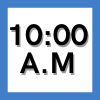
ATRAUMATIC EXTRACTION AND SOCKET PRESERVATION
10:00 a.m. – 12:00 p.m.
Speaker: Dr. Peter Shatz
Room: Dunwoody Suite
This course provides an overview of head and neck anatomy pertinent to socket preservation and guided bone regeneration, the biology of wound healing and surgical techniques. This course presents the protocols for atraumatic tooth removal and ridge preservation. These surgical procedures will be taught with clinically proven step-by-step techniques.
Topics Covered
- Anatomy & biology of periodontal tissues around teeth & implants
- Surgical Consent
- Pre- & post-operative patient instructions; medical considerations, management of post-operative complications
- Atraumatic tooth removal
- Surgical principles for successful socket grafting
- Socket preservation using hard & soft tissue graft material
Upon completion of this course participants should be able to:
- Describe anatomy and biology of periodontal tissues around natural teeth and dental implants.
- Understand the accepted physiology of healing following an extraction. Specifically the wound healing mechanism as differentiated from bone fracture healing, the function of blood clot formation, and ridge collapse following extraction.
- Competently select cases for atraumatic extraction.
- Understand the function of blood supply and capillary formation, source of calcium in bone deposited at the site vs. calcium present in the graft material, the purpose of a scaffold for capillary infiltration, and the importance of platelet-rich fibrin and growth factors in the success of a socket graft.
- Identify indications and the application for socket preservation procedures.
- Describe the management post-operative complications.
- Identification of successful socket replacement graft based on established evidence and fundamental science.
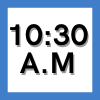
THE DENTAL IMPLANT IN PRACTICE: CONCEPTS FOR RESTORATIVE SUCCESS
10:30 a.m. – 12:30 p.m.
Speaker: Dr. Brad Hall
Room: Ravinia EFG
COURSE HANDOUTS
Dental Implants - Dr. Hall
The dental implant is an indispensable tool in any comprehensive restorative practice. However, without thoughtful application, this asset can quickly become a liability for patient and clinician. This presentation will highlight strategies and techniques for implant utilization in a general practice to increase predictability, simplify processes, and enhance outcomes.

CPR - PM
Room: Azalea
AMERICAN HEART ASSOCIATION
BLS course teaches Basic Life Saving Skills including adult, child and infant AED Training, CPR, signs of choking, how to help a choking victim, how to activate and phone your (EMS) Emergency Response Number (911).
The American Heart Association BLS Course teaches rescuers to eff ectively recongnize and treat adult emergencies in the critical fi rst minutes, until emergency medical services personel arrive.

2-DAY SLEEP MEDICINE TRACK - SESSION 7 – UNDERSTANDING HOW TO DIAGNOSE COMMON TMJ DISORDERS
1:00 p.m. – 3:00 p.m.
Speaker: Dr. Terry Bennett
Room: Ravinia ABC
COURSE HANDOUTS
This 2-day education program will cover dental sleep medicine and orofacial pain discussing TMJ disorders and briefly touch on other orofacial pain seen in a general dental practice.
It is estimated that more than 18 million Americans suffer from sleep apnea—when a person’s airway gets blocked while they are sleeping. This will often happen because a person is overweight and additional tissue thickens the wall of the windpipe, making it more difficult to keep open. And, sometimes it is because the throat muscles relax more than normal. A long, bony neck can also make for a narrower airway, which leads to sleep apnea as well.
The most common treatment option is the use of a CPAP machine. However, many patients are non-compliant to this form of treatment and do not want to undergo surgery. When this occurs, their best option may be oral appliance therapy, which is provided by a dentist. By wearing an oral appliance, it opens the airway by pushing the lower jaw forward and is more comfortable than a CPAP machine. The one-day program will give you an overview convening the following;
- Basics of Sleep, Sleep Medicine and Sleep Disorders
- The Role of the Dentist in Sleep Medicine
- Screening for Sleep Disorders
- Oral Appliances for Airway and Breathing Disorders (SRBD)
- The Jaw/Bite Registration for Construction of an Oral Appliance (Demonstration and Hands-On Exercise)
Orofacial pain covers a wide spectrum of symptoms and can be exhibited in many areas of the head and neck with the majority of complications associated with the temporomandibular joint disorder (TMD). An essential part of routine dental examinations for all patients and the gold standard for the diagnosis of TMD is based on the patient’s history, clinical examination, and imaging when necessary.
The connection between airway issues, bruxism, and TMD (orofacial pain) is no longer a question of ‘if’. Instead, it is a question of proper evaluation and diagnosis by the dental and medical teams. As a dentist, you will often evaluate, refer, and possibly manage these issues impacting such a large percentage of the population. And, with a clear relationship, we look to understand that clenching or grinding of one’s teeth is a way for the brain to protect itself from suffocation during sleep.
- Performing a comprehensive examination
- Taking a Pain history - what it all means
- Splint therapy for TMJ disorders
- Orofacial pain - what you should be aware of.

RECOGNIZING HPV INFECTIONS THAT AFFECT THE ORAL REGION
1:00 p.m. – 3 p.m.
Speaker: Dr. Susan Muller
Room: Dunwoody Suite
COURSE HANDOUTS
HPV - Muller
Human Papillomavirus (HPV) is the most common sexually transmitted infection in the United States. The US Centers for Disease Control and Prevention estimate that at least 50% of sexually active men and women will acquire genital HPV infection in their lifetime. “Low-risk” HPV types cause genital warts, while “high-risk” HPV types can cause cancer. High-risk HPV types are linked to cervical cancer and other anogenital cancers. Oropharyngeal cancer, one of the few cancers that have increased in incidence in the US, is associated with “high-risk” HPV.
This lecture will describe HPV infections, the natural history of the infection and which HPV - associated lesions are of most concern. The presentation of oropharyngeal carcinoma will be discussed in great detail and will be contrasted with oral cavity cancer – specifically cancers that arise on the lateral border of the tongue. Risk factors for HPV-related cancers and review of the current HPV vaccines available will be reviewed. The role of oral health care providers in screening for these cancers will be discussed.
Educational Objectives:
- Understand the role of HPV and oropharyngeal carcinoma
- Understand the important distinction between cancer that occurs in the oral cavity and oropharynx
- Know the various HPV vaccines available
- Understand the limitation of screening tests for oropharyngeal carcinoma

LEGAL UPDATES AND TRENDS IN DENTISTRY
1:30 p.m. – 3:00 p.m.
Speaker: Stuart Oberman
Room: Ravinia EFG
COURSE HANDOUTS
Legal updates - S. Oberman
- Teledentistry – A practice overview and what each practice owner should know about implementing teledentistry
- Negative Online Patient Reviews – How to respond (and how NOT to respond) to an on-line patient review
- Employment Law – A review of the latest updates and trends, and an overview of the most recent EEOC and DOL guidance
- Board Complaints – How to avoid a dental board compliant and how to properly respond to a Board Complaint
- How To Protect your Intellectual Property (name, data, logo, confidential information)
- HR Review –A overview of how Covid-19 changed HR

MARKETING STRATEGY SIMPLIFIED
1:15 p.m. – 3:15 p.m.
Speaker: Amy Matthews
Room; Maplewood
Do you feel like there must be an easier way to attract new patients to your practice? Do you find yourself and your staff throwing stuff at the wall when it comes to marketing, but nothing ever really sticks? You are not alone. 50% of small businesses say they do not have a marketing strategy. This means 50% of you are not actively planning for how you will keep the patients you have and gain new ones. But it does not have to be this way. Having a marketing strategy and a tactical plan you can put into action is not complicated.
What if you could have a plan for what you are going to do, where you are going to do it when you are going to do it, who is going to get it done, and how you are going to repeat it each month and quarter. Well, you can! In this session, we will cover the 7 steps you need to follow to have an amazing marketing strategy so you can stop throwing money at the wall.

2-DAY SLEEP MEDICINE TRACK - SESSION 8 - SLEEP MEDICINE MANAGEMENT
3:15 p.m. – 5:15 p.m.
Speaker: Dr. Mayoor Patel
Room: Ravinia ABC
COURSE HANDOUTS
This 2-day education program will cover dental sleep medicine and orofacial pain discussing TMJ disorders and briefly touch on other orofacial pain seen in a general dental practice.
It is estimated that more than 18 million Americans suffer from sleep apnea—when a person’s airway gets blocked while they are sleeping. This will often happen because a person is overweight and additional tissue thickens the wall of the windpipe, making it more difficult to keep open. And, sometimes it is because the throat muscles relax more than normal. A long, bony neck can also make for a narrower airway, which leads to sleep apnea as well.
The most common treatment option is the use of a CPAP machine. However, many patients are non-compliant to this form of treatment and do not want to undergo surgery. When this occurs, their best option may be oral appliance therapy, which is provided by a dentist. By wearing an oral appliance, it opens the airway by pushing the lower jaw forward and is more comfortable than a CPAP machine. The one-day program will give you an overview convening the following;
- Basics of Sleep, Sleep Medicine and Sleep Disorders
- The Role of the Dentist in Sleep Medicine
- Screening for Sleep Disorders
- Oral Appliances for Airway and Breathing Disorders (SRBD)
- The Jaw/Bite Registration for Construction of an Oral Appliance (Demonstration and Hands-On Exercise)
Orofacial pain covers a wide spectrum of symptoms and can be exhibited in many areas of the head and neck with the majority of complications associated with the temporomandibular joint disorder (TMD). An essential part of routine dental examinations for all patients and the gold standard for the diagnosis of TMD is based on the patient’s history, clinical examination, and imaging when necessary.
The connection between airway issues, bruxism, and TMD (orofacial pain) is no longer a question of ‘if’. Instead, it is a question of proper evaluation and diagnosis by the dental and medical teams. As a dentist, you will often evaluate, refer, and possibly manage these issues impacting such a large percentage of the population. And, with a clear relationship, we look to understand that clenching or grinding of one’s teeth is a way for the brain to protect itself from suffocation during sleep.
- Performing a comprehensive examination
- Taking a Pain history - what it all means
- Splint therapy for TMJ disorders
- Orofacial pain - what you should be aware of.
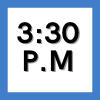
TRIPLE YOUR PRACTICE VALUE
3:30 p.m. – 5:30 p.m.
Speaker: Eric Morin
COURSE HANDOUTS
Triple your practice value - E. Morin
In this presentation, Eric J. Morin will provide you with the clarity around your financial future and make sure you know absolutely everything you could possibly know about the financial implications of keeping or selling your practice and how you can get the most money, should you decide to sell.
Learning objectives:
- How to calculate the current value of your practice
- How you can 3x the current value of your practice
- The financial implications of selling your practice
- The pitfalls of selling your practice too soon
- How you can discover the right time to sell
- 5 tactics you can implement immediately to increase the value of your practice

HIPAA COMPLIANCE: THRIVING THROUGH TECHNOLOGY
3:30 p.m. – 5:00 p.m.
Speaker: David Fidanza
Room: Dunwoody
Technology is on the march in dentistry, but it can sometimes be intimidating or just downright confusing. In this course, we’ll break down the most fundamental components of technology that dentists across the country are adopting to overcome common problems and thrive. In plain talk, this course will cover everything from minimum HIPAA requirements to opportunities to give time back to you and your staff.
You’ll walk away from the course: 1) able to identify the most common security vulnerabilities and discuss how they can be addressed 2) understanding how the unfolding software revolution in dentistry right now can increase profits and return time to staff and doctors, while better serving patients.

BETTER COMMUNICATION IS EQUAL TO MORE PRODUCTION AND A HAPPIER TEAM
3:45 p.m. – 5:45 p.m.
Speaker: Ricki Braswell
Room: Maplewood
COURSE HANDOUTS
Better Communication - R. Braswell
Wait, what? Is it really that simple? Ask yourself - Have you ever had a patient who nods their head in agreement but leaves without scheduling the treatment? Or what about the patient who schedules but doesn’t show up? Do you sometimes have tension in the practice due to a lack of communication or, a lot of miscommunication? Ever wondered what you could do about that? The secret may lie in how you communicate.
One of the key components to building a strong team and a successful practice is effective communication. Better communication can be achieved when we understand our style and learn to recognize other people’s. Further, when we develop the skills to communicate in a way which is understandable to the other person, we are able to maximize success.
This session is designed to help audience members learn about their dominant social and communication styles and identify how those styles influence the way he/she works.
Patients and team members come in all shapes and sizes and we must learn to recognize, appreciate and adapt to varying communication styles. This session guides dentists and team members through developing those advanced leadership skills which create happier, more productive teams and practices.
In this interactive program you will learn:
- How communication styles support (or hinder) your success
- How to use the strengths in your style to make you a more effective communicator
- How to identify other people’s styles so that you can best connect
SUNDAY, SEPTEMBER 26
04ce452a-a5a2-4ed4-b393-5fe8a7ccf37b.png?sfvrsn=93ca2dfc_1)
The Impact of Opioid Abuse
and Proper Prescription Writing of Opioids in a Dental Practice
Speaker: Dr. Despina Dalton
Room: Dunwoody Suite
COURSE HANDOUTS
Opioids - Dr. Dalton

All ABOUT CBCT: WHAT'S NEW AND TRUE FOR OUR PATIENTS TODAY?
8:30 a.m. – 10:30 a.m.
Speaker: Lisa Dunn
Room: Maplewood

MANAGING MEDICAL EMERGENCIES
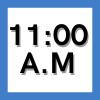
OSHA COMPLIANCE
11:00 a.m. – 12:30 p.m.
Speaker: Dr. David Reznik
Room: Ravinia EFG
It’s not news that COVID-19 has significantly changed the practice of dentistry. One thing is clear: “the way we’ve always done things” is no longer sufficient, whether it’s OSHA compliance or infection control protocols. This session addresses the most current CDC Guidelines, along with OSHA’s Respiratory Protection Standard and Bloodborne Pathogens Standard.
Upon completion of this session, attendees will:
- Review the transmissibility of COVID-19
- Discuss the current CDC Interim Guidelines
- Compare PPE requirements pre- and post-COVID-19
- Review OSHA’s Bloodborne Pathogens Standard
- Discuss OSHA’s Respiratory Protection Standard
- Identify the five most common infection control/safety issues
- Recognize the need for infection control and respiratory protection policies

THE COMPLETE CARE DENTAL TEAM
1:00 p.m. – 4:30 p.m.
Speaker: Larry Guzzardo
Room: Ravinia EFG
Working together can often be frustrating and it’s confusing to know what works to create the best team ever. By removing the guesswork from knowing what counts to allow you to work better together, working in your practice turns out to be fun and motivating. This presentation will simplify the necessary path to transition your current office culture so you can work efficiently and profitably. While learning how easy it can be, you’ll be inspired and motivated to accelerate the transition and leave with a specific plan to reduce stress and create more time to get the things done that really matter…. all while delivering complete dental care.
You will learn how to:
- Increase productivity. The collaborative nature of a team building teaches your team how to work together more effectively.
- Improve communication. Clear and open communication with patients and each other is key to the success of managing deadlines and relationships within a dental practice.
- Verbal skills to present treatment and improve case acceptance.
- Create a balance between your practice and family lifestyle.

RISK MANAGEMENT
1:00 p.m. – 4:30 p.m.
Speaker: Robert Thompson
Room: Dunwoody
Dentists cannot prevent the possibility of a lawsuit by a patient, however they can greatly minimize the possibility of a successful lawsuit. Therefore, it is critical that dentists institute basic risk management steps into their practices. Some of these steps relate to how you handle your patients emotional expectations, but most concern management of record keeping and information systems in your practice.
There will also be a discussion of standards of care in dentistry, since risk management strategies are dependent on and interwoven with a thorough knowledge of standards of care (SOC). There will be practical examples of both risk management and standards of care.

